IDEXX SDMA
SDMA Case Study: Jimmy
Increased SDMA leads to discovery of chronic kidney disease with hypertension in a cat during an annual checkup

Background information
Name: Jimmy
Age: 13 years
Breed: Domestic shorthair
Gender: Male
Presenting reason
Jimmy was brought in for his annual checkup and vaccines.
History
He was an indoor/outdoor cat, and his owner reported that Jimmy seemed to be doing fine and that there were no current concerns.
Physical examination
Jimmy was bright, alert and responsive (BAR). Normal temperature, pulse and respiration rate were observed. He had good muscle mass and a good body condition score. Remainder of physical examination unremarkable, except for some moderate periodontal disease.
Diagnostic plan
A dental cleaning was recommended, and samples were collected for a preanesthetic screen for complete blood count (CBC); chemistry panel, including the IDEXX SDMA Test; total T4; and a complete urinalysis.
Diagnostic review
- Noteworthy abnormalities found on Jimmy’s laboratory/diagnostic tests included an increased SDMA* of 23 μg/dL, and a low urine specific gravity of 1.015.
- The balance of the diagnostics, including creatinine and total T4, were within the reference intervals.
- SDMA is an earlier and more reliable biomarker for kidney function than creatinine and warrants follow-up investigation when increased.
Next steps
-
The owner was informed that some supportive care and follow-up were indicated for Jimmy ahead of his dental procedure.
-
Increased access to drinking water (bowl outside, and on different levels inside the home), a diet designed for senior patients,1 and a recheck appointment in 2 weeks were recommended.
-
Other considerations included diagnostic imaging of the kidneys and associated structures and assessment of blood pressure.
Follow-up and diagnosis
-
Jimmy presented 1 month later and his lab work showed that SDMA remained increased but stable at 19 μg/dL and his urine specific gravity was unchanged at 1.015. The remainder of his laboratory results remained within the reference interval.
-
An abdominal ultrasound showed no evidence of urinary stones or infection but small kidneys, consistent with chronic kidney disease (CKD).
-
Systolic blood pressure was 175 mm Hg, which was persistently increased when Jimmy was rechecked a few days later.
-
With the results in hand, and following the International Renal Interest Society (IRIS) CKD Staging Guidelines, Jimmy was diagnosed with IRIS CKD Stage 2 disease. It was determined that Jimmy be placed on medication for his high blood pressure and that his owners switch him to a kidney therapeutic diet while continuing to provide him several fresh water sources.
Patient reports:
Chemistry
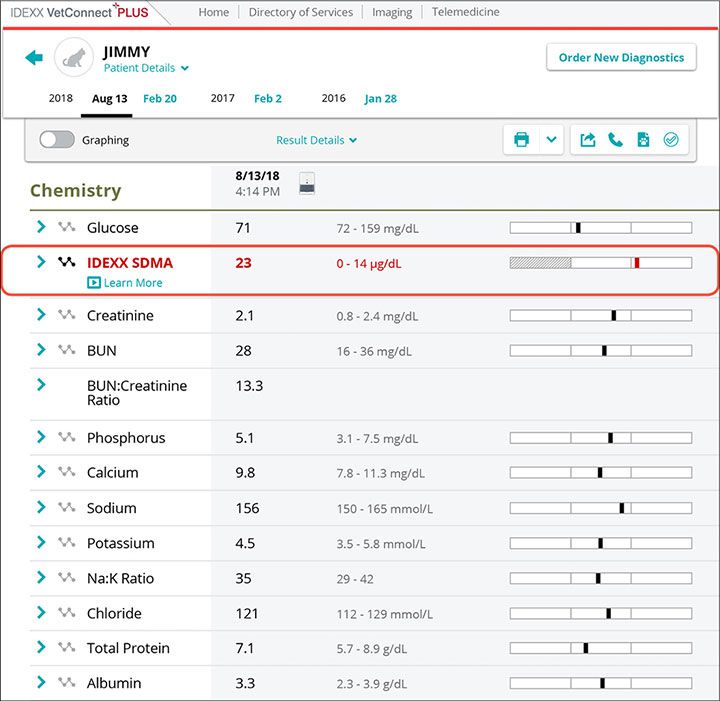
Urinalysis
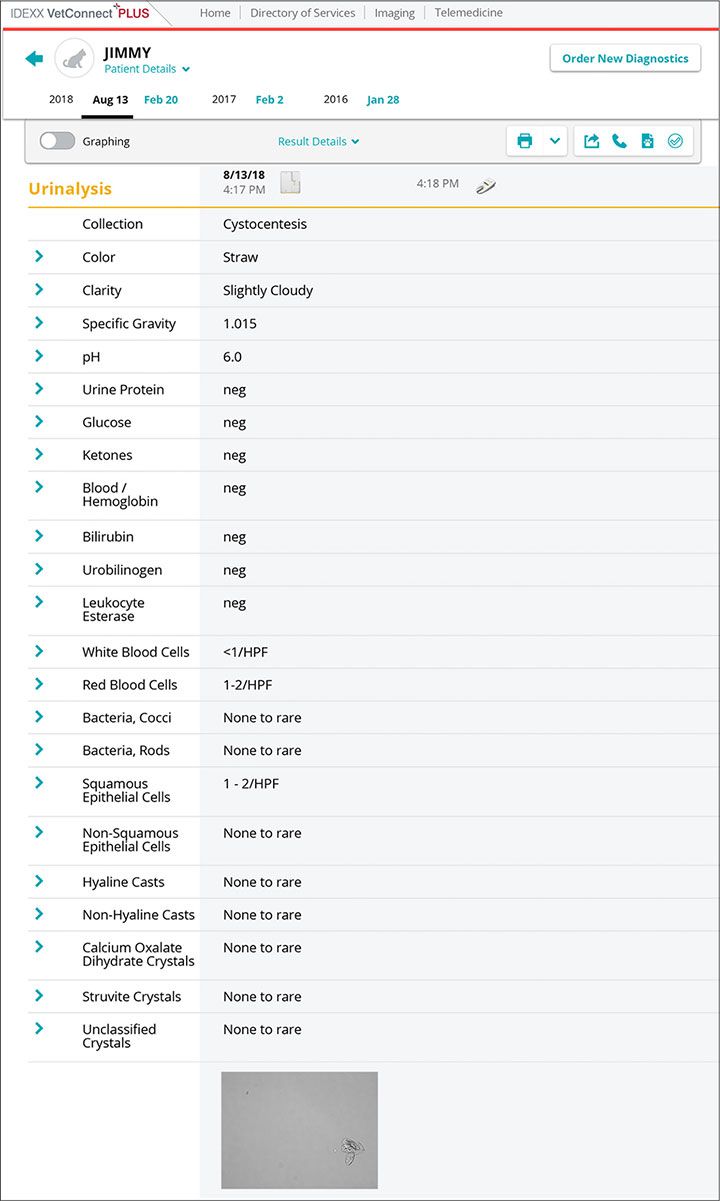
Haematology
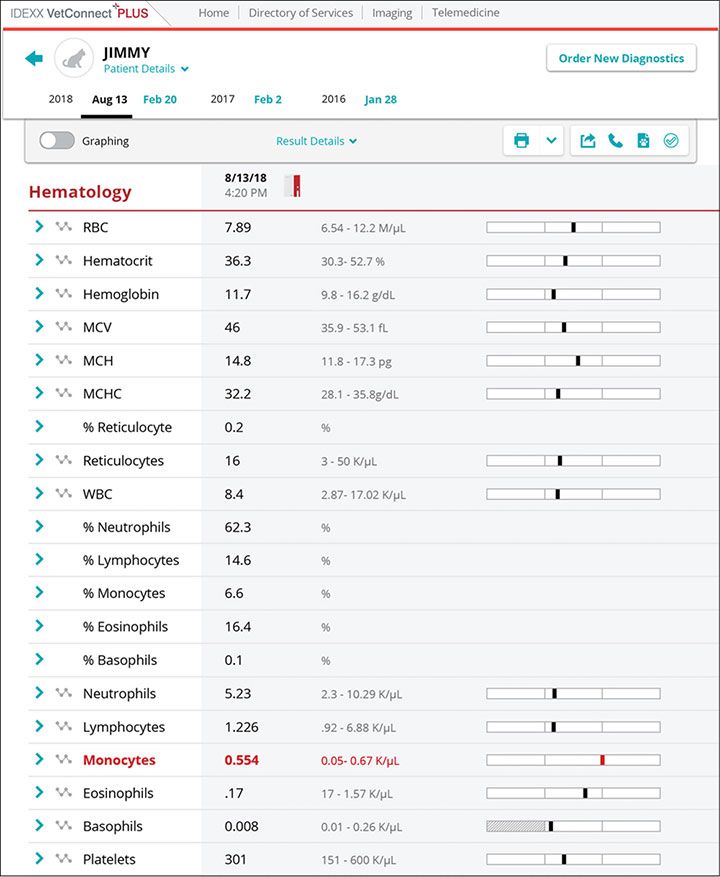
Total T4
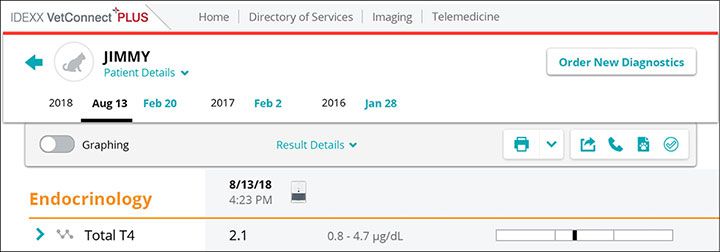
IRIS CKD staging guidelines
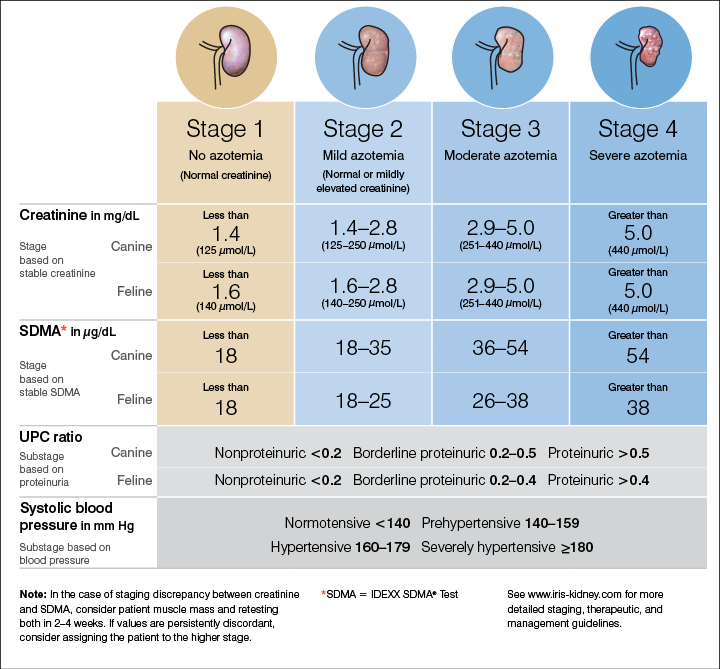
Discussion
Cases like Jimmy’s are common for general practitioners, and his case reinforces that even a single elevation in SDMA warrants further investigation and possible management.
SDMA detects problems sooner, and it is more reliable than creatinine in assessing kidney function.2-6
Making modest changes in Jimmy’s access to fresh water and instituting a kidney therapeutic diet contributed to the effort of possibly slowing the progression of Jimmy’s kidney disease. Jimmy’s kidney disease was able to be appropriately monitored and managed prior to his dental procedure. During his dental procedure, additional precautions were also taken to protect his kidneys. Longer-term regular appointments can be scheduled to monitor his kidney disease more closely thanks to the early detection afforded by SDMA. This will allow for earlier identification and treatment of kidney disease progression and complicating conditions.
Why SDMA matters
Click the portraits to see how acting on IDEXX SDMA Test results helped Reese, Molly, Bess, Jimmy, Mary Jane, Scarlet and Zeke.
*Symmetric dimethylarginine.
References
- Nabity MB, Lees GE, Boggess M, et al. Symmetric dimethylarginine assay validation, stability and evaluation as a marker for early detection of chronic kidney disease in dogs. J Vet Intern Med. 2015;29(4):1036-1044.
- Hall JA, Yerramilli M, Obare E, Yerramilli M, Jewell DE. Comparison of serum concentrations of symmetric dimethylarginine and creatinine as kidney function biomarkers in cats with chronic kidney disease. J Vet Intern Med. 2014;28(6):1676-1683.
- Hall JA, Yerramilli M, Obare E, Yerramilli M, Almes K, Jewell DE. Serum concentrations of symmetric dimethylarginine and creatinine in dogs with naturally occurring chronic kidney disease. J Vet Intern Med. 2016;30(3):794-802.
- Hall JA, Yerramilli M, Obare E, Yerramilli M, Yu S, Jewell DE. Comparison of serum concentrations of symmetric dimethylarginine and creatinine as kidney function biomarkers in healthy geriatric cats fed reduced-protein foods enriched with fish oil, L-carnitine and medium-chain triglycerides. Vet J. 2014;202(3):588-596.
- Hall JA, Yerramilli M, Obare E, Yerramilli M, Melendez LD, Jewell DE. Relationship between lean body mass and serum renal biomarkers in healthy dogs. J Vet Intern Med. 2015;29(3):808-814.



